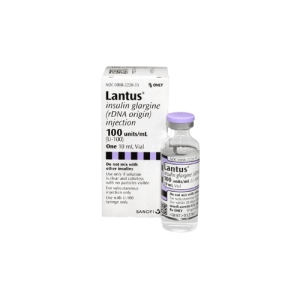Animal insulin, which is derived from the pancreas of animals, was the first insulin type to be used to treat diabetic patients. In fact, the first injection of animal insulin was given in 1922 to a patient in Canada. At the time, animal insulin resulted in pain and swelling at the injection site because it contained various impurities. A synthetic insulin form commonly referred to as human insulin was introduced in the late 70s. This new human insulin would soon replace animal insulin as the main treatment for IDDM or insulin dependent diabetes mellitus. Diabetes mellitus is a metabolic condition where insulin secretion is reduced, the body is insulin resistant, or both. As a result, patients with this condition experience high levels of blood glucose.
What is human insulin?
It is a synthetic form of the hormone that mimics what is naturally produced in humans. The human insulin protein is composed of amino acids that are similar to the amino acids found in animal insulin, such as pigs and cows. In the 60s, insulin was the first human protein to be chemically synthesized. Human insulin is today available in 2 forms, intermediate-acting and short-acting insulin. Examples of short-acting insulin include Humulin S, Insuman Rapid, and Actrapid. Examples of intermediate-acting insulin include Insuman basal and Humulin I.
What is animal insulin?
It is a type of insulin that is derived from animals. They include bovine insulin and porcine insulin. Today, animal insulin is purified to reduce the risk of allergic reactions. Animal insulin is available in 3 different forms: long-acting insulin, intermediate-acting and short-acting. Intermediate-acting animal insulin has an onset time of 4 to 6 hours and peaks after 8 to 14 hours. This type of insulin can last up to 24 hours. Examples of intermediate-acting insulin include Hypurin Bovine Isophane and Hypurin Porcine Isophane. Short-acting animal insulin has onset time of 30 minutes and peaks after 3 to 4 hours. The duration of short-acting insulin is 8 hours. Examples of short-acting animal insulin include Hypurin Porcine Neutral and Hypurin Bovine Neutral. Long-acting animal insulin usually takes a long period of time before it starts to work in the body and can last up to 36 hours. Examples include hypurin bovine PZI.
Similarities and differences between animal insulin and human insulin
Both human insulin and animal insulin mimic the mechanism of action of the naturally produced hormone. When injected subcutaneously, both human and animal insulin help to reduce high levels of blood sugar. They are both available as injectable solutions. Both human and animal insulin are classified according to how fast they act to lower blood sugar levels. The different forms of animal and human insulin include short-, intermediate-, and long-acting insulin. However, animal insulin has a slower acting time and longer duration periods than human insulin.
—
Disclaimer: Please note that the contents of this community article are strictly for informational purposes and should not be considered as medical advice. This article, and other community articles, are not written or reviewed for medical validity by Canadian Insulin or its staff. All views and opinions expressed by the contributing authors are not endorsed by Canadian Insulin. Always consult a medical professional for medical advice, diagnosis, and treatment.














